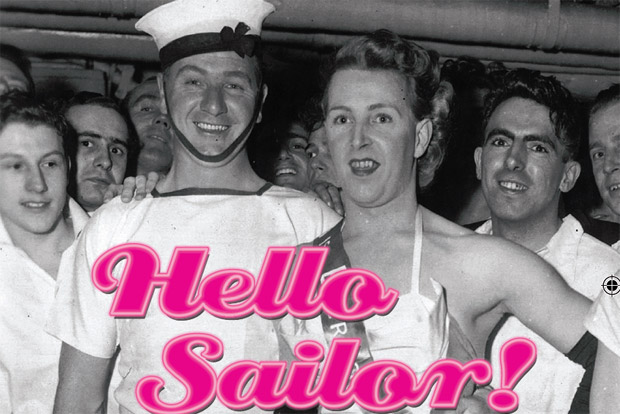Images of burly, tattooed sailors shoveling coal into the fire-powered engine of a steamship do a lot to further the notion the sea is home to only the most macho of men.
It may seem unlikely gay men could even hope to find acceptance travelling the ocean, least of all between the 1950s and 80s, but such is not the case.
There was, in fact, a very welcoming atmosphere onboard for gay, bisexual and transvestite men.
Dr. Jo Stanley first heard about gay subculture among seafarers in the 1970s, leading her to co-author a book, “Hello Sailor: The Hidden History of Gay Life at Sea” and eventually a travelling museum exhibit.
Gay men brought a lively energy to cruise ships – and to lesser extent cargo-carrying vessels – that was good for business, Stanley says ahead of the exhibit’s opening, for the first time in North America, this week at the Maritime Museum of the Atlantic in Halifax.
The acceptance grew with the increase of travel on cruise ships in the post-war era.
Passenger ships were much more easy-going and gay men, she says, made trips more enjoyable, performing for customers and crew.
“(They) were good news for the shipping line,” she says.
But there was something about the way openly “camp” gay men conducted themselves that allowed them to transcend their sexual orientation, to be seen as characters rather than just homosexuals.
There were some limits to this, she explains: You mostly saw this openness among service staff, not so much with captains and operators.
“The guys who were more serious… were much more covert because they knew that they could lose their job if it was found out they were gay. “
While she hasn’t spoken to captains or crew that found a way to be open about their sexuality, she has heard stories of straight men standing up for their gay counterparts.
The acceptance she says existed on the seas often didn’t exist on land and it was common for gays to get beat up while visiting other countries.
One story she fondly recalls is that of a gay man whose shipmates protected him from being gay bashed in a port of call, the crew saying “He may be queer, but he’s our queer.”
People get surprised by the level of acceptance onboard such ships, although Stanley doesn’t know necessarily come with a preconceived notion about the seafaring life for gay men between the 1950s and 1980s, the period she studied.
Canadian perspective
Stanley’s groundbreaking research focused primarily on British-based ocean liners, but the Maritime Museum of the Atlantic conducted its own interviews to gain a Canadian perspective, ahead of this week’s opening.
Curator Dan Conlin spoke with gay and lesbian mariners and found some interesting stories of acceptance.
But, he notes passenger service for Canadians wasn’t as prominent at that time and there wasn’t necessarily that same “gay oasis.”
He heard a range of stories of acceptance and integration among shipmates, onboard cargo ships, tanker, tall ships and so on.
“We tended to find gay men and women who integrated themselves into the crew,” Conlin says.
Many of the gay and lesbian mariners who shared stories with the museum said there was a “˜sailor first’ identity.”
“You get used to sort of getting along with a whole bunch of different people on ship,” he says.
Much like Stanley’s findings, Conlin says many gay men and lesbians found life on the seas more tolerant than on land.
“The worst homophobic treatment tended to come from shore side institutions, especially in the Canadian Navy prior to 1992, when they had witch hunts seeking to entrap gay men (and women).”
Until 1992 it was illegal for gay men and women to serve openly in Canada’s armed forces.
What Conlin would like people to take away from the exhibit is the reality that “gay people go to sea like everyone else does.”
“Ships, although we tend to think of them as a very macho, rule-bound, traditional environment, can often have a surprising amount of acceptance for people of all kinds of backgrounds.”
It’s a reality people don’t often think about, but hopefully they’ll walk away from the exhibit with.
The fact that kind of tolerance on ships, Stanley says, is a “hopeful sign” we can accept diversity on land.
The exhibit “Hello Sailor: Gay Life on the Ocean Wave” officially opens Wednesday, May 18 at the Maritime Museum of the Atlantic in Halifax and runs for the public from May 19 until November 27.




Comments